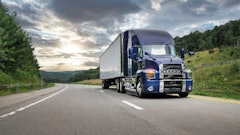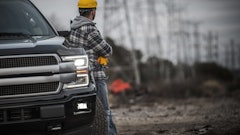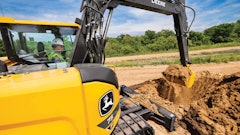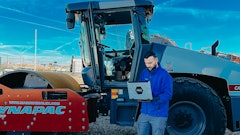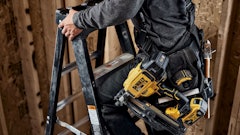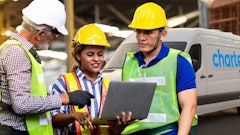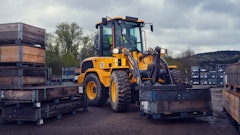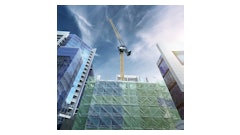
Telematics technology has become an increasingly integral part of how construction business owners manage their fleets. While a relatively new entrant into telematics application, lift equipment is no exception. Both contractors and the companies they rent from are taking advantage of the data captured to better monitor and manage these machines on projects.
To learn more on how this technology is being applied and the benefits being obtained, we asked four leaders in this product segment to share insights on the following four questions. They had plenty to say on the topic.
Q: What has led to the growing use of telematics in the management of lift equipment, and on what types of lifts is it most commonly being applied?
Jonathan Shapiro, Senior manager of Business Development, JLG ClearSky telematics solutions: Although telematics have been around for more than 20 years, the recent rise in adoption can be attributed to two main drivers:
- The cost of telematics technology has decreased significantly over the past few years, including the hardware necessary on the machines, the software needed to gather and analyze the data and the portals or applications used to access the information anywhere, any time — even on remote jobsites.
- OEMs are now supplying telematics devices factory-installed and form-fitted to the exact machine on new production models. This offers a huge convenience to equipment owners and fleet managers who, in the past, have had to evaluate, choose and install their own telematics solutions or hire someone after the sale to do so. Now, on new units with factory installed telematics, one just needs to connect the asset and access the data via a mobile device or computer.
Another advantage of OEMs taking the lead in telematics solutions for lift equipment is that with this “real-time” machine data, they can more quickly and easily help customers solve issues or offer remote diagnostics. With this valuable machine data, many OEMs are now viewing telematics hardware and data as a tool to be used by both heavy equipment owners as well as the OEM.
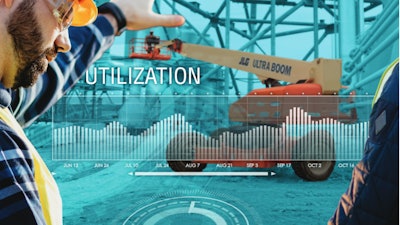 Telematics technology can give visibility into the equipment’s location on the jobsite, asset utilization metrics, as well as its operating condition.JLG Industries
Telematics technology can give visibility into the equipment’s location on the jobsite, asset utilization metrics, as well as its operating condition.JLG Industries
Mike Sheremeta, Telematics Business Development Associate, Skyjack: The growing use of telematics is due to more rental companies and contractors recognizing that it’s a key cost and time saver for them. Rental companies are saving thousands of dollars in labor fees by providing their service personnel with remote visibility and eliminating unnecessary service trips. Telematics helps contractors get their jobsites back up and running faster and without wasted labor and equipment rental hours. When end users choose to share information with OEMs, it results in improved product designs that enhance productivity and efficiency. Altogether, multiple parties benefit from telematics which has led to its growing use.
By working directly with rental companies to see how past telematics offerings fell short, Skyjack got more customers to use telematics through its award-winning ELEVATE technology that delivers machine-specific information resulting in significantly lower labor costs, reduced downtime and fewer trips to jobsites for service personnel. ELEVATE is available as an option on all Skyjack machines. It is most commonly installed on the SJ3219, simply because that’s Skyjack’s most-produced machine.
 Telematics is currently being installed primarily on self-propelled lifting equipment such as telehandlers, booms and scissor lifts.Snorkel
Telematics is currently being installed primarily on self-propelled lifting equipment such as telehandlers, booms and scissor lifts.Snorkel
For the most part, telematics is being installed on self-propelled lifting equipment, such as telehandlers, booms and scissor lifts. To date, telematics is less common on simple push-around lifts and material lifts, although this may change in future as telematics companies are starting to offer modules geared toward hand tools and smaller equipment, which may be better suited to less complex lifting equipment.
Anja Groebner, Director, Connected Assets and Value-Added Services, Genie: Telematics gives rental owners greater understanding of how equipment is being used, enabling them to more efficiently manage their fleet. Ultimately, telematics can save rental owners time and money.
Telematics helps with remote troubleshooting, it enables rental stores to proactively manage machine uptime, and prescriptive data helps rental stores plan for how many technicians with which skill sets will be needed in the future.
Genie boom lifts and GTH telehandlers come from the factory equipped with Lift Connect telematics. Lift Connect also is available as an option on GS scissor lifts, GR vertical mast lifts and TZ trailer-mounted boom lifts. Customers are seeing value in the Lift Connect solution across their Genie fleet and are applying it across our product families.
Q: What types of operating data is currently being captured on the different types of lift equipment and how can it be used to more effectively manage and maintain this equipment?
Elvin: This really comes down to the complexity of the operating system in the piece of equipment and also if the operating company has the ability to interpret the data efficiently into meaningful messages and actions. The basic requests we see in the aerial lift and telehandler segment are location, operational hours, battery level and engine parameters and codes on diesel units.
The location data is used to identify exactly where a machine is located in real time, which is especially helpful on large jobsites, and for rental companies when collecting equipment or sending out a service technician to work on a particular unit.
Groebner: A range of operational data about the equipment can be captured regarding usage, performance and reliability. Examples include fuel consumption, battery charge information, up/down times, operation, movement and location. On system-controlled equipment, reported fault codes and sensor values are providing valuable insights for fleet and service managers.
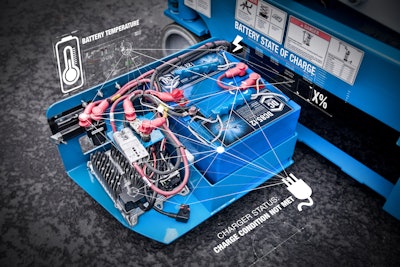 Fleet managers can utilize Genie Lift Connect data to better understand their fleet health and improve machine utilization.Genie - Terex AWP
Fleet managers can utilize Genie Lift Connect data to better understand their fleet health and improve machine utilization.Genie - Terex AWP
Shapiro: Today’s telematics systems typically combine GPS technology, diagnostics and monitoring sensors to track, log and report data on the performance and operation of an equipment fleet. The data can provide high-level or finite details on a number of machine systems, including equipment location, fuel consumption, idle times and machine alerts. Right now, the most common data point for all machines is the machine hours, which are used not simply for reporting usage but are also for understanding maintenance and inspection intervals.
With access to this kind of machine data, one way telematics can help aerial equipment fleet managers is by more accurately managing their machines’ service needs. For example, appropriately timing regular and preventive maintenance of each machine in the fleet, in particular, is a challenge that fleet managers face every day. Equipment usage on jobsites often lasts weeks or months. That equipment must be maintained while out in the field to ensure it operates as expected and without interruption to avoid unexpected downtime, lost productivity and the related cost implications.
Telematics technology can also give visibility into the aerial equipment’s location on the jobsite, asset utilization metrics including engine hours, as well as its operating condition, through fault and diagnostic codes, any time of the day or night
As machines get “smarter,” they offer even more data to equipment owners and fleet managers that improve insights not only into machine health but also into operator productivity. Today’s telematics has evolved so much that it is now being used to help equipment owners/fleet managers understand how machines are being used by operators to perform day-to-day tasks. For example, telematics can report back information from the machine’s load-sensing system (required under the new ANSI standards in the U.S.). Having data on the platform’s weight is very important in preventing overload situations and machine interruptions.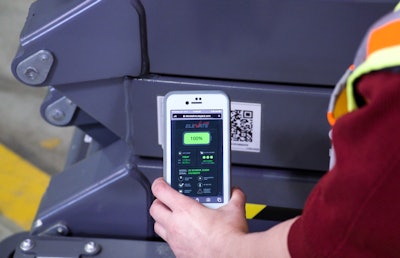 Skyjack's ELEVATE Live provides access to important safety information, such as emergency lowering procedures or visual pre-check guides, through a simple QR code.Skyjack
Skyjack's ELEVATE Live provides access to important safety information, such as emergency lowering procedures or visual pre-check guides, through a simple QR code.Skyjack
This level of understanding will help uncover gaps in operator training and knowledge, as well as highlight when additional training or retraining is needed.
Sheremeta: Skyjack’s ELEVATE provides alerts and various actionable insights into machine operation that amount to measurable benefits. Some examples of data that customers can get include:
- True working time through analysis of lifting, driving, load, and total run time
- Battery Management System (BMS) offers battery health and treatment analysis, increasing the lifespan of battery packs
- CAN data and alerts send critical machine faults to key personnel for immediate action
- True utilization looks beyond machine run time to generate accurate reports
- Ready to operate remotely indicates when machine settings are incorrect and provides quick resolutions that stop costly on-site service calls
In addition, the ELEVATE Live feature provides access to operators to critical machine information, including the machine’s current state of health. This has given operators more information and resources than ever before and significantly reduced the workload for rental companies.
Through true [understanding] of how equipment is used in the field, rental companies can make better decisions about how to more effectively manage and maintain their equipment. If they choose to share their data with OEMs, rental companies and manufacturers can work together to design equipment that better reflects how machines are used while on rent.
For example, Skyjack used data shared with it by rental companies to come to the conclusion that its booms weren’t taking full advantage of the machine’s larger engines and that the power those engines did have wasn’t being fully used by operators. This led Skyjack to launch its all-new 40-ft. and 60-ft. booms that use less than 25-hp engines to deliver the same on-site job performance as higher-powered units.
Q: Beyond data capture, what other features can telematics provide and what are the benefits to both rental operations and end users?
Groebner: A complete telematics solution is designed to do a lot more than simply capture data. It also provides tools to act on the information provided through that data.
Additionally, features enabled through telematics are very valuable for customers and end users. An example of this is Access Manager, a new add-on feature that works with Genie Lift Connect telematics to control machine access. Through Access Manager, rental companies have the capability to assign only authorized operators to a machine. This significantly improves the security of the equipment and teams on the jobsite.
Shapiro: Telematics are the conduit between “smarter” machines and equipment owners/fleet managers. Beyond data capture, telematics can provide feedback on improving the way the machine is maintained. For example, knowing when the batteries need to be recharged or if there is a clogged filter or too much water in the fuel tank are common challenges that occur every day in equipment ownership and management that can be alleviated by accessing machine data through telematics.
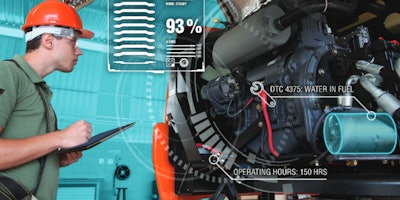 Beyond data capture, telematics can provide feedback on improving the way the machine is maintained.JLG Industries
Beyond data capture, telematics can provide feedback on improving the way the machine is maintained.JLG Industries
Telematics also offers a lot of insight into equipment usage and utilization. Understanding not only how the machine is being used, but also how often it is being used and for what types of applications and tasks can feed into a company’s bigger picture, where it can contribute to long-range business strategies and fleet planning. Those strategies might include growing a customer base, offering better machine familiarization at the start of each rental, limiting the geographical radius in which machines may be used and decreasing the number of jobsite service calls, to name a few.
Sheremeta: Past telematics offerings were segregated by product type, requiring rental companies to log into a number of different platforms to get data for their entire fleet. The launch of ELEVATE introduced a mixed-fleet solution that allows companies to see their entire fleet in one central location. This eliminates the burden of logging into multiple platforms and provides rental companies comprehensive data sets in a faster and more simplistic way.
In addition to the benefits that telematics offers to rental companies and end users... it also promotes equipment longevity and safe use. For example, ELEVATE Live provides access to important safety information through a simple QR code, like emergency lowering procedures, visual pre-check guides, and familiarization videos.
Elvin: Most sophisticated telematics systems offer the ability to send real-time alerts for a range of purposes. These can usually be set up by the OEM, rental company and customer and vary based on what notifications are important to each stakeholder.
For example, machine fault alerts can be set up by the rental company so they can proactively take steps to provide technical support or troubleshooting assistance to their customer. A customer may set up alerts to notify them when the equipment is being operated outside of specified hours, alerting them to possible unauthorized usage.
Additionally, the use of geographical virtual fencing, or “geofencing” as it is widely known, provides additional protection for equipment, issuing alerts if the border is broken. This is beneficial to both the customer and the rental company while the equipment is on rent, but is also a valuable tool when the equipment is off-rent in a rental yard. The alert of a border being broken enables a fast response to a possible theft scenario, and the GPS tracking assists in locating any equipment which may have been successfully removed from a jobsite or rental yard.
Q: What long-term opportunities do you see in both the broader application of telematics in lift equipment and in the improved analysis and utilization of the data captured?
Groebner: A broader application of telematics in lift equipment will further improve efficiency and quality.
Improved analytics and utilization of the captured data also are key levers to improving machine uptime and efficiency, as well as enabling OEMs and rental operations to offer additional services to their customers that focus on improving jobsite productivity.
Elvin: The use of telematics in aerial equipment presents an opportunity for OEMs and rental companies to provide enhanced levels of product support, both through real-time monitoring and alerts, as well as analyzing trends in the data over longer time periods, which can drive other business improvements and developments.
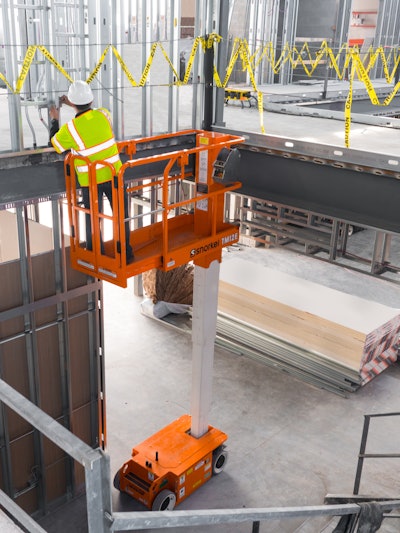 OEMs can use telematics data to help shape future product development.Snorkel
OEMs can use telematics data to help shape future product development.Snorkel
Sheremeta: Telematics has become integral to how rental companies, contractors and OEMs make decisions, keep contractors connected and ultimately create improvements that save costs and increase return on investment. The benefits have a clear and positive impact on the bottom line and Skyjack expects telematics to be further shaped by new advancements.
The industry is currently making progress to tag and track construction assets of all sizes, from machine attachments to hand tools through the use of telematics. Equipment tagging solutions ensure that equipment doesn’t get lost on jobsites, which saves time and money. It essentially creates a virtual tool crib for contractors, allowing them to always know where their equipment is.
Skyjack will continue to listen to its customers to engineer telematics products in the future that respond to their key needs.
Shapiro: Today’s telematics technology is making it easier for equipment owners/fleet managers to access machine information and improve functionality. So, as we look to the future and long-term opportunities, I think it’s time for the conversation to change. I think that we should stop talking about telematics and talk about IoT (Internet of Things) in construction.
The scope of telematics — primarily focused on the remote monitoring of an asset — is actually quite narrow when compared to what IoT can bring to the table, as the internet connects devices and allows them to communicate to each other. Look at the evolution from a flip phone to a smartphone. That’s really the evolution of telematics to IoT.
For lift equipment, it becomes less about a single wireless device on a machine. Today’s machines are able to provide critical data on usage, safety, weight and so on. The telematics device is the conduit for this data — not only to get the right data, but also to integrate it into useful reports and utilize it consistently to help make critical fleet management decisions.
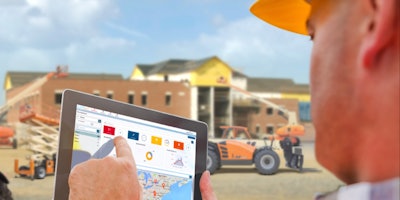 Telematics is now being used to help equipment owners/fleet managers understand how machines are being used by operators to perform day-to-day tasks.JLG Industries
Telematics is now being used to help equipment owners/fleet managers understand how machines are being used by operators to perform day-to-day tasks.JLG Industries
It can also provide fleet managers with the ability to control the aerial equipment’s on and off status based on an operator’s training and/or safety credentials. For example, with telematics, fleet managers can monitor which machines are being used, how long the equipment is operating each day and the critical advantage of easily monitoring battery usage, including whether or not equipment has been plugged in for charging at the end of the day.
Also, IoT can simplify the equipment selection process. For example, using the JLG Augmented Reality app, a contractor could walk through the process of selecting equipment by answering questions related to the job and then visualizing the equipment in the space if needed. Apps can guide contractors with simple questions, such as:
- Have you ever used this equipment before?
- How high do you need to go with this piece of equipment?
- Will you need one person or two in the platform?
Then, the app can provide the contractor with a recommendation, as well as locate the appropriate piece of equipment at a nearby rental store and ideally check it out through his device. And, in the future, when it’s time to return the equipment, contractors could extend the rental or complete the off-rental process by mobile device.
The benefits of IoT in construction help equipment owners, fleet managers and contractors be more competitive and solve common problems. It’s really changing the whole market.












